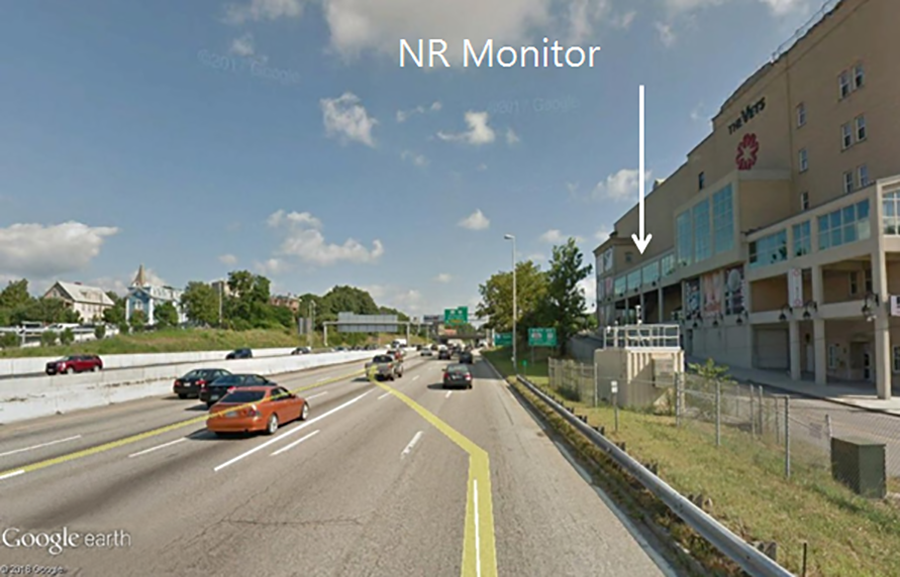Modeled and Measured Near-Road PM<sub>2.5</sub> Concentrations: Indianapolis and Providence Cases
Clients
Washington State Department of Transportation (WSDOT)
Near-Road Air Quality Transportation Pooled Fund (TPF)
Sonoma Technology data scientists developed modeling analyses to evaluate the predicted near-road PM<sub>2.5</sub> concentrations near major freeways. Our analyses also assessed the sensitivity of modeled near-road concentrations to the choice of dispersion model (AERMOD or CAL3QHCR), meteorological data, and travel data processing approach, and compared modeled concentrations to real-world measurements.</p>
This work was completed as part of Sonoma Technology's work on the <a href="/projects/4431">Transportation Pooled Fund.</a href></p>
The results of this study were published in <a href="https://www.sciencedirect.com/science/article/pii/S1352231020305070" target="_blank">Atmospheric Environment.</a href></p>
The abstract of the article is below.</p>
Modeling analyses were developed to evaluate near-road PM<sub>2.5</sub> concentrations predicted by the AERMOD dispersion modeling chain under real-world conditions, and to assess the sensitivity of modeled near-road concentrations to the choice of dispersion model (AERMOD or CAL3QHCR), meteorological data, and travel data processing approach. We evaluate PM<sub>2.5</sub> monitoring sites near major freeways in Indianapolis, Indiana (for 2016) and Providence, Rhode Island (for 2015–2016). The modeling analyses are built upon bottom-up estimates of temporally and spatially resolved roadway PM<sub>2.5</sub> emissions based on traffic monitoring data and local vehicle fleet emission factors. The dispersion model simulations use local meteorological data collected at or close to the near-road monitoring sites. Predictions involved a modeling chain that included travel activity data processing, emissions modeling (MOVES and AP-42), and air quality dispersion modeling. We estimated the difference between PM<sub>2.5</sub> concentrations at the near-road monitor and at nearby urban air quality monitoring sites (the measured near-road “increment”), and compared modeled results to the measured increments. Based on monitoring data, estimates of multi-day-averaged near-road PM<sub>2.5</sub> increments were 0.9 ± 0.6 μg/m<sup>3</sup> at Indianapolis and 1.4 ± 0.2 μg/m<sup>3</sup> at Providence (where the uncertainty represents the 95% confidence interval on the mean value), and were comparable to measured PM<sub>2.5</sub> increments at these sites in the near-road literature. Modeled roadway contributions to multi-day-averaged near-road concentrations substantially exceeded measured values based on the near-road monitoring data. The average near-road PM<sub>2.5</sub> increment modeled with AERMOD was more than 300% (factor of four) larger than the measured increment at Indianapolis, and more than 500% (factor of six) larger than the measured increment at Providence. These biases reflect cumulative uncertainty throughout the near-road PM<sub>2.5</sub> modeling chain. The emissions modeling component may have contributed to the modeling chain biases in two ways. First, the relative contribution of modeled non-exhaust emissions (PM<sub>2.5</sub> brake wear, tire wear, and re-suspended road dust) compared to tailpipe exhaust emissions was higher than what has beendocumented in several published studies. Second, other research findings indicate that the U.S. EPA MOVES2014 model may over-predict tailpipe PM<sub>2.5</sub> exhaust. The dispersion modeling component may have also contributed to the modeling chain biases. For example, when local meteorological data were used, AERMOD results were relatively insensitive to wind direction on a daily averaged basis; as a result, modeled concentrations exceeded measured values regardless of whether the near-road monitor was upwind or downwind of the roadway. In summary, this work provides a unique evaluation of PM<sub>2.5</sub> concentrations predicted by the near-road modeling chain, and provides valuable information to understand potential sources of uncertainty in the near-road modeling process.
This work was completed as part of Sonoma Technology's work on the <a href="/projects/4431">Transportation Pooled Fund.</a href></p>
The results of this study were published in <a href="https://www.sciencedirect.com/science/article/pii/S1352231020305070" target="_blank">Atmospheric Environment.</a href></p>
The abstract of the article is below.</p>
Modeling analyses were developed to evaluate near-road PM<sub>2.5</sub> concentrations predicted by the AERMOD dispersion modeling chain under real-world conditions, and to assess the sensitivity of modeled near-road concentrations to the choice of dispersion model (AERMOD or CAL3QHCR), meteorological data, and travel data processing approach. We evaluate PM<sub>2.5</sub> monitoring sites near major freeways in Indianapolis, Indiana (for 2016) and Providence, Rhode Island (for 2015–2016). The modeling analyses are built upon bottom-up estimates of temporally and spatially resolved roadway PM<sub>2.5</sub> emissions based on traffic monitoring data and local vehicle fleet emission factors. The dispersion model simulations use local meteorological data collected at or close to the near-road monitoring sites. Predictions involved a modeling chain that included travel activity data processing, emissions modeling (MOVES and AP-42), and air quality dispersion modeling. We estimated the difference between PM<sub>2.5</sub> concentrations at the near-road monitor and at nearby urban air quality monitoring sites (the measured near-road “increment”), and compared modeled results to the measured increments. Based on monitoring data, estimates of multi-day-averaged near-road PM<sub>2.5</sub> increments were 0.9 ± 0.6 μg/m<sup>3</sup> at Indianapolis and 1.4 ± 0.2 μg/m<sup>3</sup> at Providence (where the uncertainty represents the 95% confidence interval on the mean value), and were comparable to measured PM<sub>2.5</sub> increments at these sites in the near-road literature. Modeled roadway contributions to multi-day-averaged near-road concentrations substantially exceeded measured values based on the near-road monitoring data. The average near-road PM<sub>2.5</sub> increment modeled with AERMOD was more than 300% (factor of four) larger than the measured increment at Indianapolis, and more than 500% (factor of six) larger than the measured increment at Providence. These biases reflect cumulative uncertainty throughout the near-road PM<sub>2.5</sub> modeling chain. The emissions modeling component may have contributed to the modeling chain biases in two ways. First, the relative contribution of modeled non-exhaust emissions (PM<sub>2.5</sub> brake wear, tire wear, and re-suspended road dust) compared to tailpipe exhaust emissions was higher than what has beendocumented in several published studies. Second, other research findings indicate that the U.S. EPA MOVES2014 model may over-predict tailpipe PM<sub>2.5</sub> exhaust. The dispersion modeling component may have also contributed to the modeling chain biases. For example, when local meteorological data were used, AERMOD results were relatively insensitive to wind direction on a daily averaged basis; as a result, modeled concentrations exceeded measured values regardless of whether the near-road monitor was upwind or downwind of the roadway. In summary, this work provides a unique evaluation of PM<sub>2.5</sub> concentrations predicted by the near-road modeling chain, and provides valuable information to understand potential sources of uncertainty in the near-road modeling process.


Kenneth J. Craig

Kenneth
J.
Craig
Manager, Atmospheric and Emissions Modeling Group / Principal Scientist
kcraig@sonomatech.com
/sites/default/files/2023-02/KJCres.pdf
